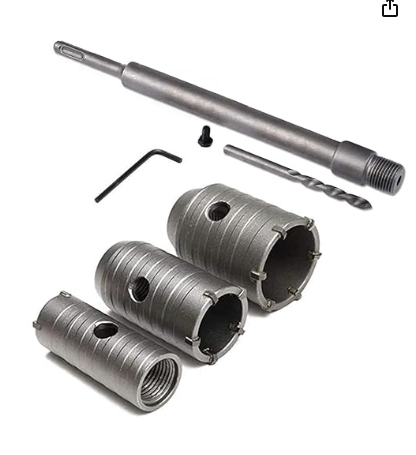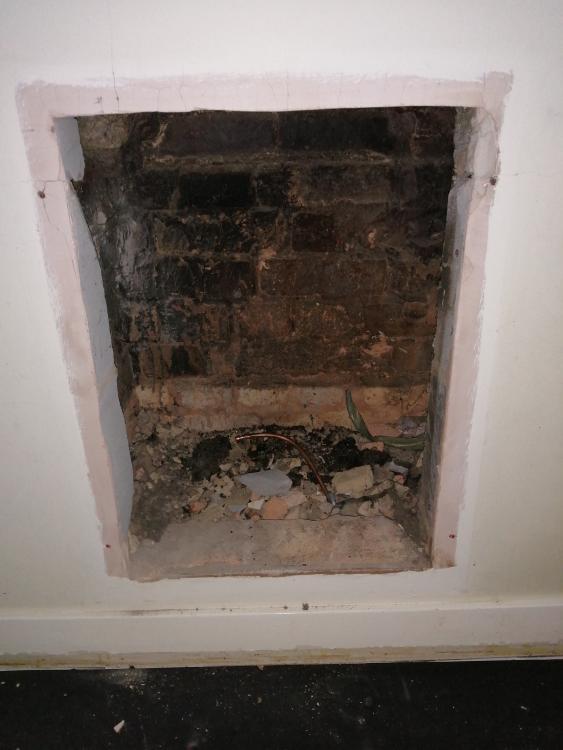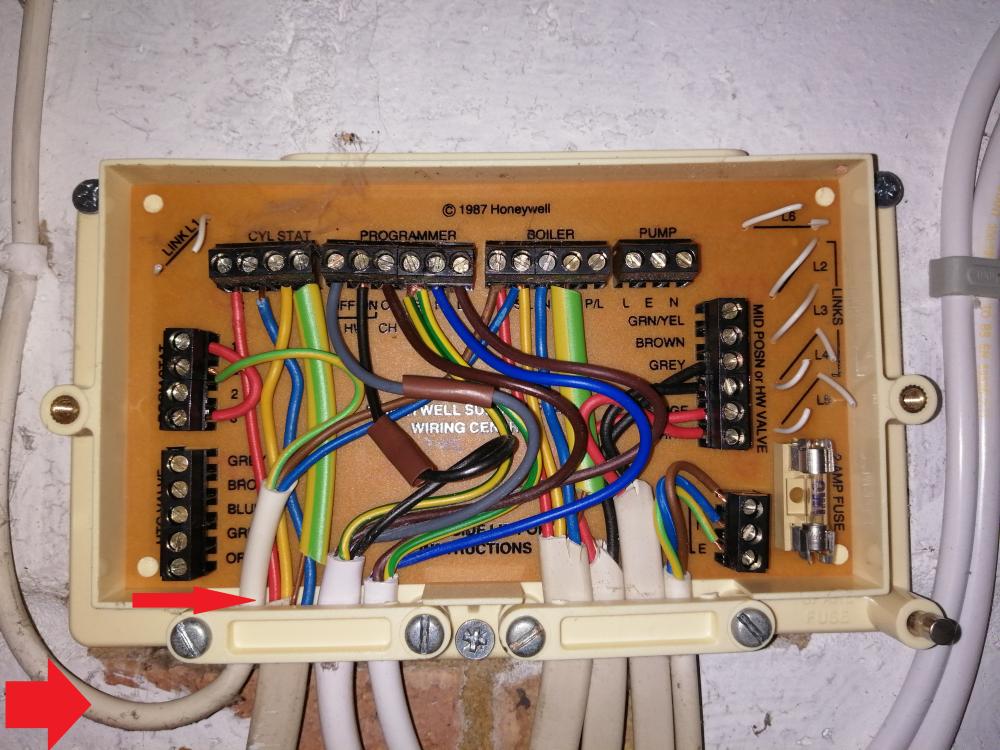
Steve1309
Members-
Posts
17 -
Joined
-
Last visited
Steve1309's Achievements

Member (3/5)
2
Reputation
-
Lumps of mortar from the verge tiles on my 26 year old roof fell off in one go the other day. Should I just re-mortar the failed section or assume it's all a bit suspect and rebed the entire verge both sides? Thanks for your advice.
-
Drilling through a brick pier
Steve1309 replied to Steve1309's topic in General Self Build & DIY Discussion
Thanks for all your suggestions. I successfully drilled a 8mm pilot hole with a log masonry drill I already had and a borrowed SDS drill. I then used a 40mm bit with a 350mm shank off Amazon for £17. Took about an hour to get through from both sides. -
Drilling through a brick pier
Steve1309 replied to Steve1309's topic in General Self Build & DIY Discussion
@G and J Good point but it's not load bearing at all. It's just a brick pier with a cap against the house wall on which to hang the back gate. -
Hi, I need to drill a 32mm hole, horizontally, through a 230mm x 350mm brick pier (through the 350mm deep part). This is to connect a rainwater downpipe diverter on one side, to the water butt on the other side. (going round the pier would look untidy and foul the gate) I can see there are all types of drill bits available but considering this will be a one-off need, what is the cheapest type of drill bit that would be long enough to go through 350mm of brick and mortar using a standard Bosch electric hammer drill? Or, I guess with a shorter bit, I could drill from both sides and hope they meet in the middle :-) Thanks in advance
-
I'm having an EV charger installed by a nationwide company, The charger will be mounted on an external wall above the electric meter cupboard which houses the incoming mains, fuse, meter and tails off to the consumer unit a couple of metres away on the other side of the garage wall. The installer at the initial visit said he'd run the charger input cable down to the meter cupboard (about a foot below) and make the connection in there. I was expecting the charger input lead to be run through a drilled hole in the garage wall and up to the consumer unit. I have the charger already with various metal consumer boxes, a surge protector and other bits. I don't doubt it will be installed ok from a regulatory point of view but wondered if installing it in a potentially cramped meter cupboard was a good idea over installing it near the consumer unit in the garage where there's plenty of wall space. TIA.
-
Hi, The porch on my house has a section of 'wall' about 60cmw x 200cmh consisting of a wooden frame which has plasterboard on the inside of the house and wood planks faced with wood cladding on the outside. The gap between the two is about 120mm. It therefore has no thermal properties and is a cold spot. What material should I place between the inner and outer 'wall' to provide better insulation? TIA
-
Thanks @nod, no, the fireplace and chimney are at the centre of the bungalow, so no external walls.
-
Hi, I'm bricking up a fireplace in a bungalow. It's a 1970s build and a small living room fireplace which I think has only ever had a gas fire. The gas pipe comes up from the floor in the middle of the fireplace. The chimney is lined with a round (pipe) liner of concrete/clay material? Question is, do I need to leave a hole when bricking up for ventilation? If so, what does this ventilation prevent and wouldn't it cause a draft into the living room? Thanks for your advice.
-
Wiring in a Honeywell L641B Pipe stat
Steve1309 replied to Steve1309's topic in Boilers & Hot Water Tanks
Thanks @ProDave You've confirmed what I thought. Cheers -
For some reason, a pipe state was not wired in to the frost stat. Consequently, when the temperature in the garage where the boiler is, gets below 5 degrees, the heating comes on and doesn't stop. I can see that the pipe stat needs wiring in series after the frost stat but not sure how to do this correctly in the Honeywell sundial wiring centre. I've attached a photo of the wiring centre as is. The frost stat wire is indicated with the red arrows. The Frost stat is mounted next to the wiring centre, The boiler is about 5 metres away. Any advice welcome. I have tried to get a heating engineer out to do this but it seems like something nobody's interested in doing. TIA
-
Thanks, but I don't think so. It's finer than tarmac, if you scratch it it's like grey/black sand set in some sort of binding agent.
-
Hi, Can anyone help me identify what this stuff is likely to be that's between my edging kerbs? I know it came in a tub. I need to buy some to repair a small area. Thanks
-
Thanks @CarrerahillYou've confirmed what I thought should be done to fix. I don't hold out much hope of getting the original firm to come back and do it properly and will probably end up paying someone else to do it properly or doing it myself.
-
Apologies Carerahill I replied to the wrong reply. I haven't ignored your advice, I am very appreciative, I just wanted to be clear as to whether the kerb and edging blocks need to be lifted or just the kerbs. Thanks again
-
Thanks Temp for your advise. This is what I have, the edge course and kerb sitting on the bedding with just a haunch to keep it together. Are you suggesting as a minimum, to remove the kerbs and bedding underneath, down to at least 100mm and fill with concrete into which set the kerbs with a haunch? Thanks again








